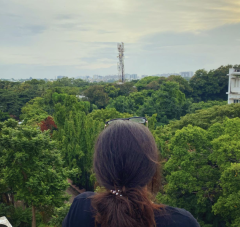I, just like anyone else, find myself laying in bed, browsing through TikTok endlessly. I do it to pass the time and find myself trapped in a loop of being glued to my phone for the sole purpose of watching 30-second videos of strangers on the internet. While I find the majority of TikTok content to be interesting, instructive, and light-hearted, I have seen a lot of changes in the algorithm and believe it is indeed biased in terms of which creators appear in my feed. As a woman of colour, I’m always fascinated when I see a creator from my race on my feed, but it’s not something I see all that frequently. Not nearly as much as I see white creators’ content pop up regularly. Of course, the algorithm filters out the content I want to view, but it’s not as broad as it claims to be.
TikTok’s rapid leap to fame since its launch in 2016 has ushered in a whole new era of influencer culture, but not without criticism. Let’s take the aftermath of the Black Lives Matter movement for example. Several creators claim they’ve seen a drop in viewership and interaction on their videos after publishing content in favour of the Black Lives Matter movement, or that they’ve recently witnessed instances where TikTok’s community standards weren’t being applied fairly to Black producers. Even though TikTok pledged to make good changes for its Black producers, some users claim they’re still witnessing the same patterns of discrimination on the platform.
Shadowbanning, which refers to the alleged practice of restricting the spread of material without alerting creators that it violates any community norms, has been a growing source of worry among users on platforms such as TikTok, Twitter, and Instagram. It’s impossible to prove whether or not shadow banning is taking place due to the nature of the notion. Some argue that bias in active users’ behaviours, rather than purposeful blatant racism, is the most powerful predictor of what material users view. However, TikTok’s growth in popularity amid the coronavirus outbreak, along with claims that it has been restricting videos by people of colour, particularly Black producers, has raised the question of whether the platform supports its Black creators.
When I did some digging to find actual creators who spoke about the issue, I came across- Jimi Fatoki, also known as Trill Jimi in the TikTok community, stating that TikTok is his major source of income. The 18-year-old calls his postings “uplifting” and claims he focuses on positivity, love, truth, and information.
I started getting censored, heavy. My videos would get taken down a lot – like multiple times a day. I would be blocked from posting temporarily for a week at a time, or a few days. My actual account got taken down four times,
Jimi Fatoki
However, Fatoki, a Black content producer, alleges he has been banned from the app several times and that many of his videos have been shadowbanned, which means the platform reduced the number of views on a user’s post, sometimes to zero, without informing the user.
In reaction to concerns over anti-Black filtering allegations on TikTok, they issued a message to the Black community on June 1, 2020. TikTok presented a progress report later that month, highlighting their changes to promote Black producers.
All of this leads me to wonder how much TikTok genuinely does to support its creators. Adisson Rae and Charli D’Amelio are the buzz of the town for their dance routines, although the black choreographers who created the routine are given no credit. From walking the red carpet at the Met Gala to appearing on Jimmy Fallon’s programme, it’s possible that another creator might have sat in the same chair. Some lecturers pointed out that the majority of individuals who develop the code are white, and that even if they appear to be welcoming and open-minded, they have internalised racism that affects their judgments.
When are we going to see meaningful change in the realm of digital media? Most importantly, when are these platforms going to have an anti-racist lens themselves?
